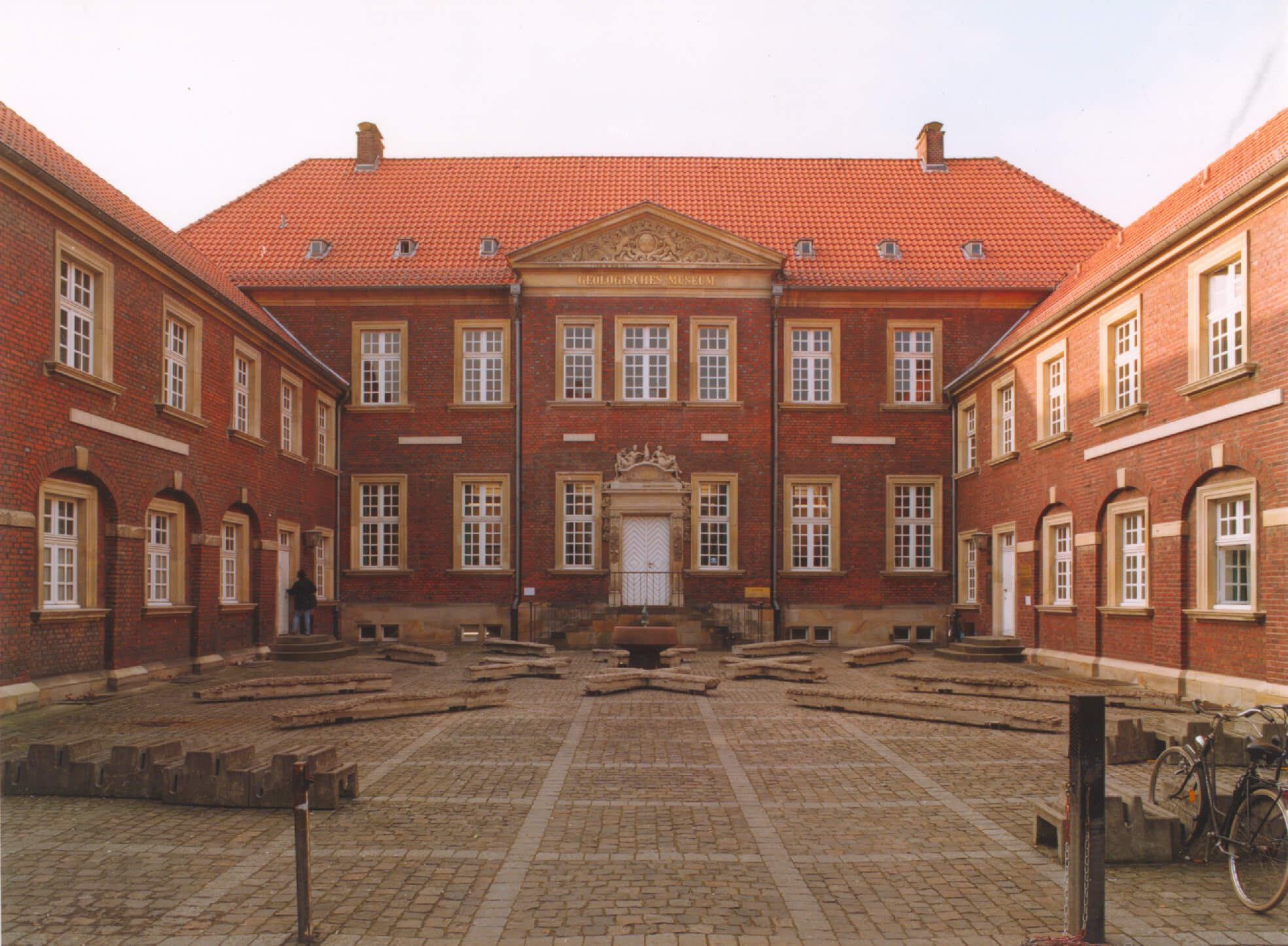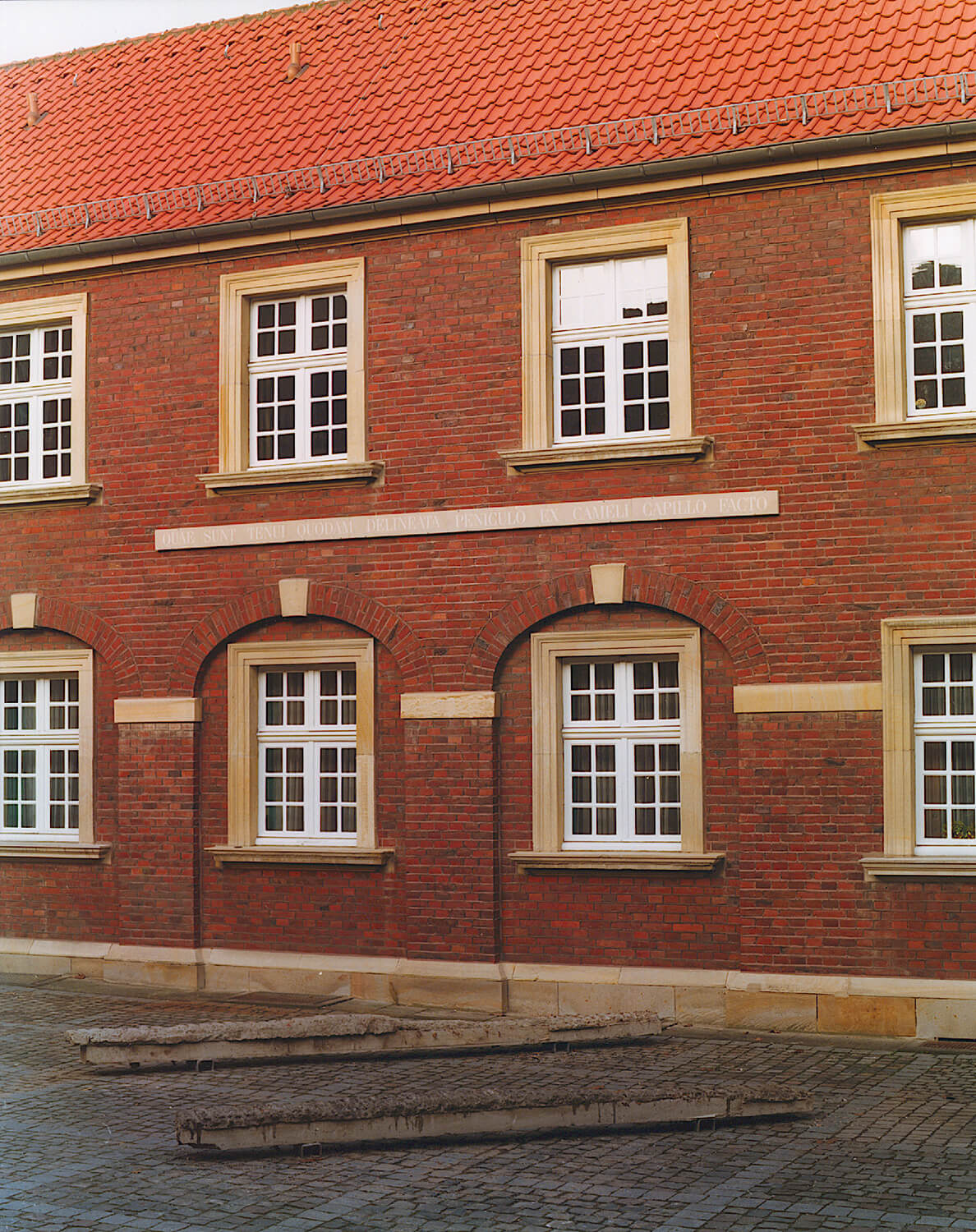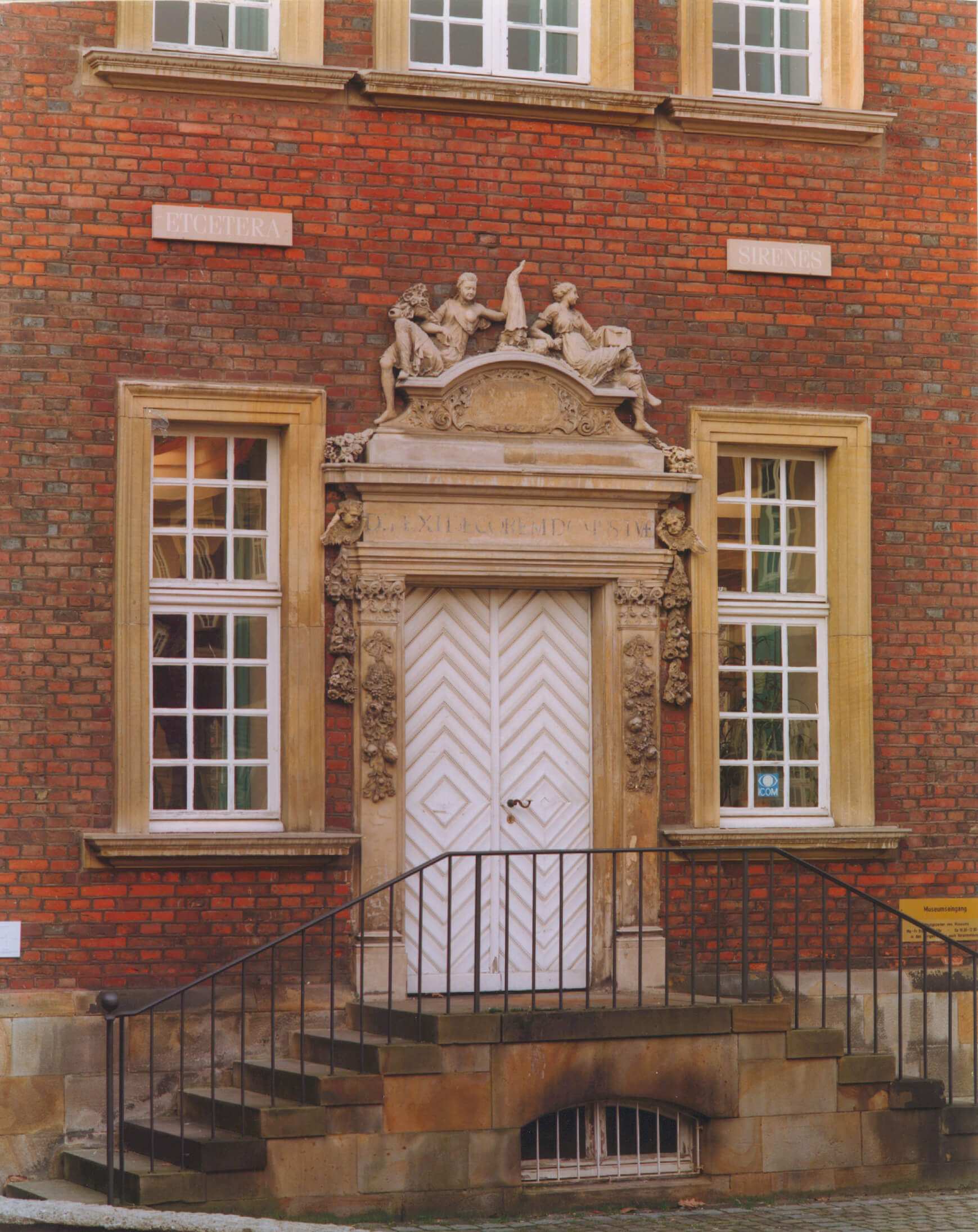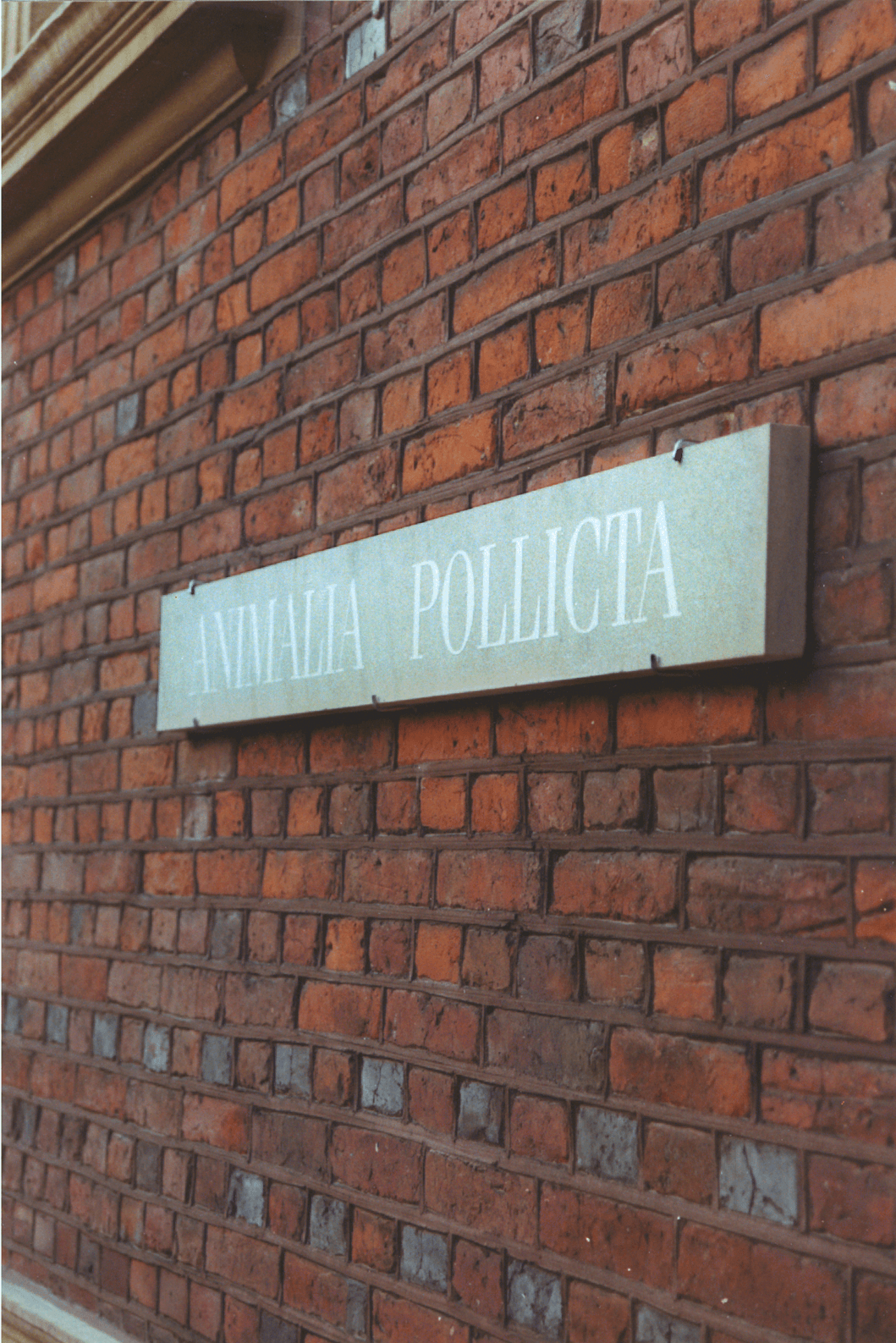1998, Art in public space
Sandstone, paint
Developed for Geologisches Paläontologisches Museum, Münster, Germany
Photo: Roman Mensing
| / |
Many scientific disciplines that were shaped in the 19th century proceeded to investigate social life by establishing similarities, identities, categories and defining norms. There was an intense transitivity between knowledge and domination. One of the resources Ersen consulted was the Chinese Encyclopedia* by Jorge Louis Borges, which was one of the most cynical texts defying instrumentalist thought. This text, which Michel Foucault quoted in his prologue to The Order of Things , included an absurd listing that mocked the obsession to classify. In “Those without a Place ”, Ersen had Borges’s categories translated into Latin and installed these translations on the exhibition museum’s facade with fonts resembling those used on front walls of many academic institutions in Europe (inscribing them on sandstone slabs to match the texture of these stone buildings). These new ‘guests’ yield a new perspective on the objects in the museum which have been classified according to other criteria, thus causing new relationships to appear. The sharp classifications of fossils and animal skeletons in the institution were being debunked with the sarcastic content of this arbitrary taxonomy on the facade.
*In this work the animals are categorized as:
a. those belonging to the emperor,
b. embalmed animals,
c. domesticated animals,
d. suckling pigs,
e. mermaids,
f. legendary animals,
g. those belonging in this category,
h. the madly fluttering,
i. the uncountable,
k. those painted with a very fine camelhair brush,
l. et cetera,
m. those which have broken the jug,
n. those that from faraway look like flies





